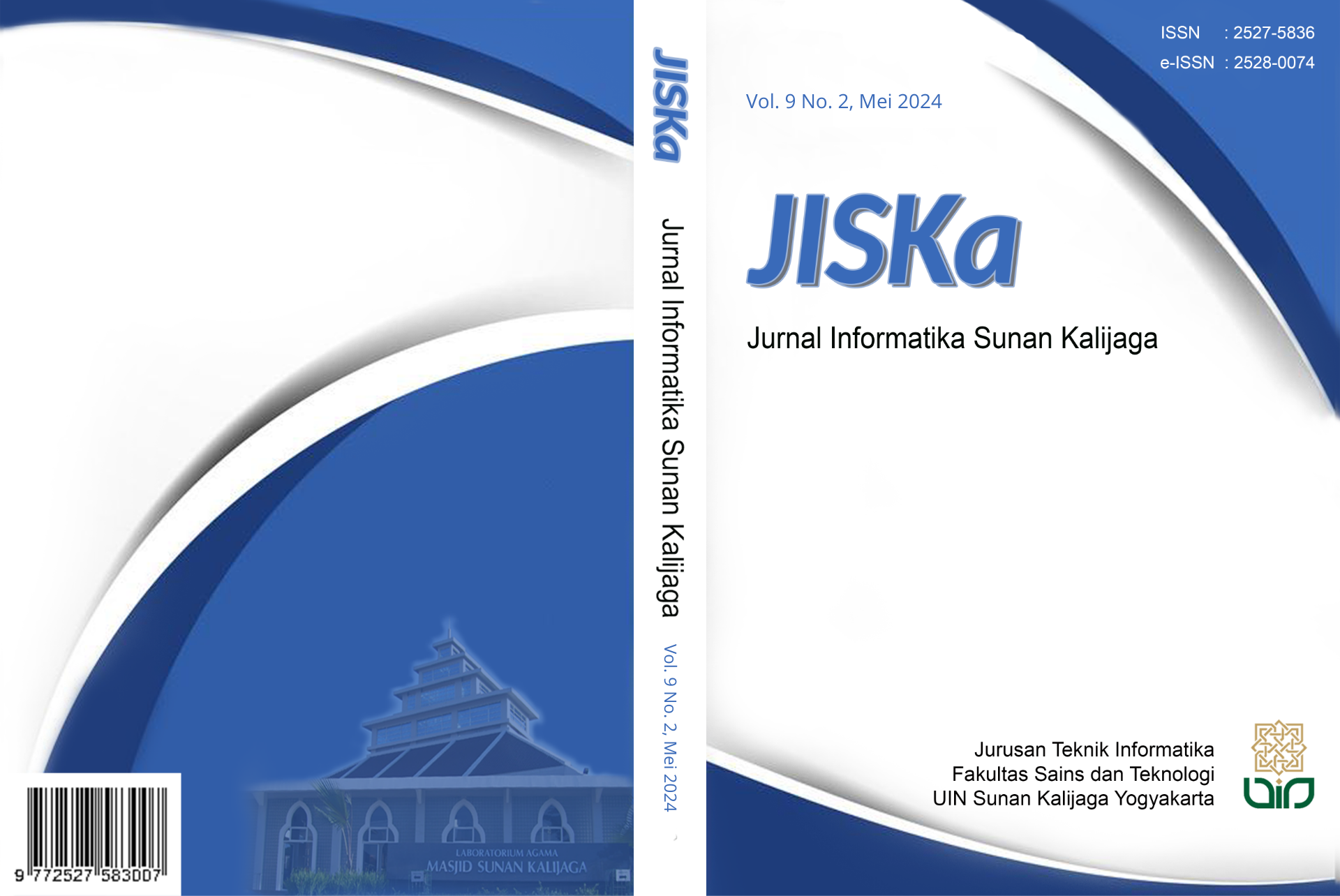Analisa Jejaring Sosial Terhadap Fenomena Cyberbullying Fandom K-Pop pada Sosial Media Twitter
DOI:
https://doi.org/10.14421/jiska.2024.9.2.79-93Keywords:
K-pop, Cyberbullying, Centrality, Fandom, SNAAbstract
This study examines cyberbullying among K-pop fandoms through social network analysis (SNA) using data from Twitter, a social media platform. The phenomenon of K-pop gaining global popularity also brings negative impacts, such as cyberbullying, which can affect the psychological well-being of victims. Using R Studio and Gephi analysis tools, this study applied centrality values, including degree centrality, betweenness centrality, closeness centrality, and eigenvector centrality, to identify influential accounts in the spread of the cyberbullying phenomenon. This analysis provides insight into the interaction and influence between Twitter user accounts in the context of cyberbullying. The main objective of this research is to paint a picture of the cyberbullying phenomenon involving various K-pop fandoms and identify the accounts that play an essential role in the related communication network.
References
Akbar, Z. I. (2021, April 23). Apa itu Text Mining? BINUS Higher Education. https://sis.binus.ac.id/2021/04/23/apa-itu-text-mining/
Bader, D. A., Kintali, S., Madduri, K., & Mihail, M. (2007). Approximating Betweenness Centrality. In Algorithms and Models for the Web-Graph: Vol. 4863 LNCS (pp. 124–137). Springer Berlin Heidelberg. https://doi.org/10.1007/978-3-540-77004-6_10
Brandes, U. (2001). A faster algorithm for betweenness centrality*. The Journal of Mathematical Sociology, 25(2), 163–177. https://doi.org/10.1080/0022250X.2001.9990249
Cho, Y., & Lee, J. (2022). The Role of Social Media in Shaping the Narrative of Cyberbullying in K-Pop Fandoms. Social Media + Society, 8(1).
Donegan, R. (2012). Bullying and Cyberbullying : History, Statistics, Law, Prevention and Analysis. The Elon Journal of Undergraduate Research in Communications, 3(1), 33–42. https://api.semanticscholar.org/CorpusID:16065546
Gradinger, P., Strohmeier, D., & Spiel, C. (2010). Definition and Measurement of Cyberbullying. Cyberpsychology: Journal of Psychosocial Research on Cyberspace, 4(2). https://cyberpsychology.eu/article/view/4235/3280
Irawan, D. (2018). Psikolog: Cyberbullying Bisa Membuat Korban Jadi Depresi. Health Liputan6.Com. https://www.liputan6.com/health/read/3304433/psikolog-cyberbullying-bisa-membuat-korban-jadi-depresi
Kim, H. J., & Park, S. H. (2021). Sentiment Analysis of Tweets Related to K-Pop Fandoms: Focusing on Cyberbullying Incidents. International Journal of Data Science and Analytics, 11(3), 287–299.
Lee, S., & Jang, J. (2020). Exploring the Dynamics of Cyberbullying in K-Pop Fandom Communities on Twitter. Journal of Cyberpsychology, Behavior, and Social Networking, 23(5), 315–322.
Lim, J. H., & Choi, D. (2024). A Study on the Psychological Impact of Cyberbullying within K-Pop Fandoms on Twitter. Journal of Media Psychology, 36(2), 223–237.
Park, M., & Kim, S. (2023). Analyzing the Spread of Cyberbullying Messages in K-Pop Fandom Networks on Twitter. Journal of Computational Social Science, 6(2), 145–160.
Tineges, R., & Davita, A. W. (2021). Tahapan Text Preprocessing dalam Teknik Pengolahan Data. DQLab. https://dqlab.id/tahapan-text-preprocessing-dalam-teknik-pengolahan-data
Tionardus, M., & Setuningsih, N. (2022, August 18). Arti Fandom di Kpop. Kompas.Com. https://entertainment.kompas.com/read/2022/08/18/152828066/arti-fandom-di-kpop?page=all
Tsvetovat, M., & Kouznetsov, A. (2011). Social Network Analysis for Startups: Finding Connections on the Social Web. O’Reilly Media, Inc. https://books.google.co.in/books?id=Tn-L5WoCeygC&printsec=frontcover#v=onepage&q&f=false
Yuniar, E., Utsalinah, D. S., & Wahyuningsih, D. (2022). Implementasi Scrapping Data Untuk Sentiment Analysis Pengguna Dompet Digital dengan Menggunakan Algoritma Machine Learning. Jurnal Janitra Informatika Dan Sistem Informasi, 2(1), 35–42. https://doi.org/10.25008/JANITRA.V2I1.145
Downloads
Published
How to Cite
Issue
Section
License
Copyright (c) 2024 Mohammad Iqbal Ghufron, Endang Supriyati, Tri Listyorini

This work is licensed under a Creative Commons Attribution-NonCommercial 4.0 International License.
Authors who publish with this journal agree to the following terms as stated in http://creativecommons.org/licenses/by-nc/4.0
a. Authors retain copyright and grant the journal right of first publication with the work simultaneously licensed under a Creative Commons Attribution License that allows others to share the work with an acknowledgement of the work's authorship and initial publication in this journal.
b. Authors are able to enter into separate, additional contractual arrangements for the non-exclusive distribution of the journal's published version of the work (e.g., post it to an institutional repository or publish it in a book), with an acknowledgement of its initial publication in this journal.
c. Authors are permitted and encouraged to post their work online (e.g., in institutional repositories or on their website) prior to and during the submission process, as it can lead to productive exchanges, as well as earlier and greater citation of published work.










